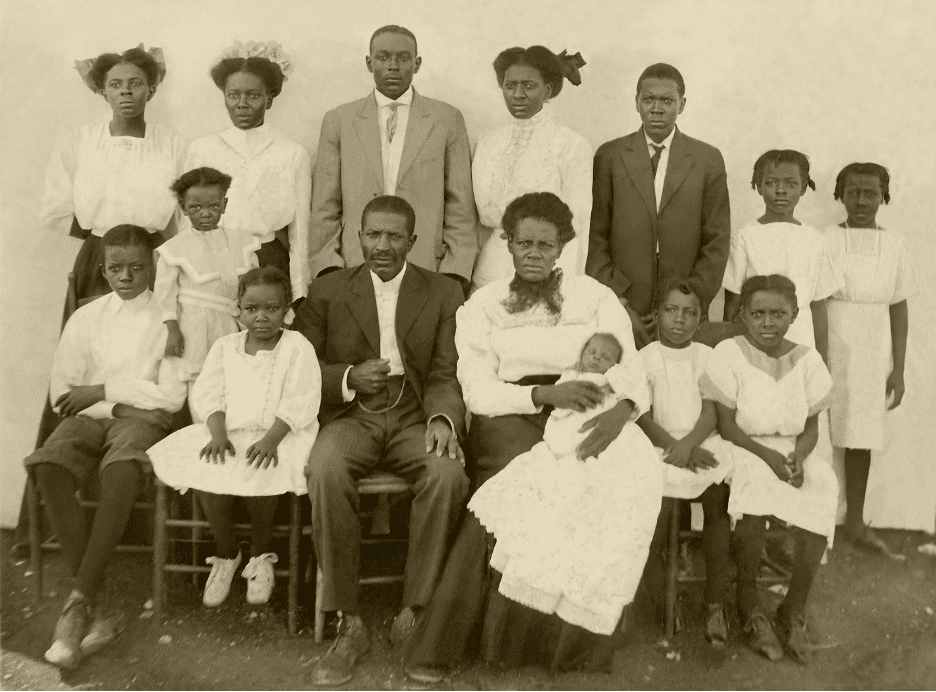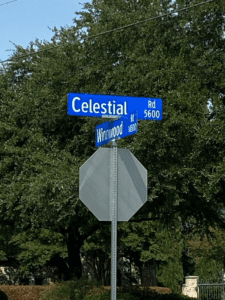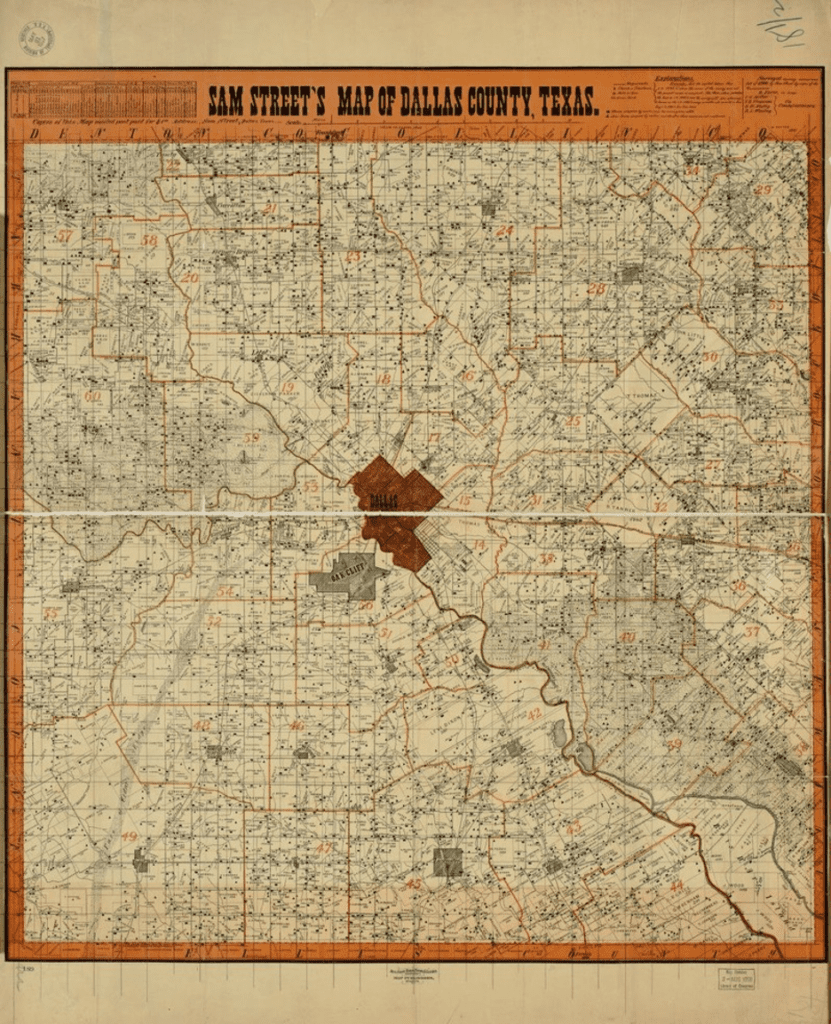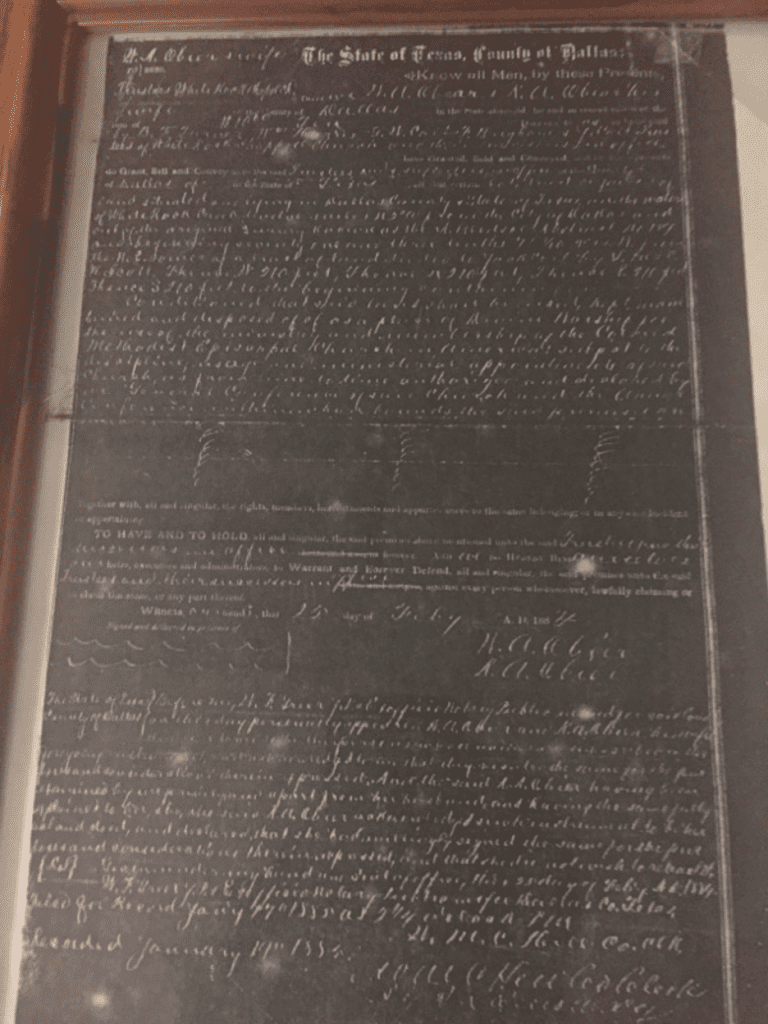History
HISTORY OF WHITE ROCK CHAPEL
In 2000 the Texas Historical Commission designated the location, 5555 Celestial Road in Addison, Texas, home of the White Rock Chapel, a historic site and worthy of a Texas State Historical Marker. Its legacy is a history of racial reconciliation and understanding during turbulent times in this country during and following the Civil War. The White Rock Chapel of Addison was established as a private, nonprofit cultural and spiritual convening place in 2018.
The historic legacy, which White Rock Chapel of Addison seeks to preserve and celebrate, began during the Civil War when some of the North Texas plantation owners opened the way for white circuit preachers to organize worship and prayer meetings of the enslaved men, women and children.
Several churches grew out of those early meetings in the Upper White Rock area, according to the family lore of the descendants of some who were enslaved on the nearby Coit, Caruth and Obier Plantations. They bought land on which to build their homes and establish farms; to build churches; and to create cemeteries
The White Rock Chapel was founded by some of those early worshippers, and they continued to worship near White Rock Creek following emancipation. In 1884, those families of the White Rock Chapel C.M.E. Church purchased an acre on the shady banks of the creek and built their first church of rough-hewn logs. They worshipped there for thirty-four years.
In 1918, after enduring years of devastating flash floods that swept away a family with young children and washed away their church records, the congregation moved to higher ground at what is now 5555 Celestial Place. The land was donated to the church by a white landowner who often worshipped with the White Rock Chapel congregation over many years.
The current buildings on the site are modern constructions, replacing two earlier wood-framed churches. The first was destroyed in a devastating storm, and the second one burned down in a 1960 fire believed to be arson. Following that fire the congregation worshipped in the tiny 1918 parsonage for 21 years, until the current church was built in 1981. The parsonage was replaced by the current fellowship hall in 2009.
The White Rock Chapel of Addison celebrates the faith, hope and love that God has shown through those whom He has reconciled and is calling us today to renew with continuing reconciliation and unified purpose.
 Sidney Smith Noell, came to Addison from Georgia in 1875. He married Nannie Lively Noell, and their property eventually encompassed more than 1,200 acres south of Beltline, between Midway Road and Preston Road. Part of the original Peters Colony, the town of Addison was first called Noell Junction.
Sidney Smith Noell, came to Addison from Georgia in 1875. He married Nannie Lively Noell, and their property eventually encompassed more than 1,200 acres south of Beltline, between Midway Road and Preston Road. Part of the original Peters Colony, the town of Addison was first called Noell Junction.
S. S. Noell often worshipped with the White Rock Chapel congregation, and he donated two acres on Celestial Road to the White Rock Chapel congregation in 1918, so that the church could move to higher ground away from the creek.
Important Dates

Henry Keller, Sr. and his wife Mary Jane Reed Keller were among the early families of White Rock Chapel. Both were born into slavery on a Tennessee plantation. Soon after emancipation, they married and moved to Collin County first, but on finding that Collin County did not allow Blacks to buy property, they moved to Addison in Dallas County and bought property. Among the earliest families in Addison, their farm included an everlasting natural spring that supplied water for their family. The Kellers generously shared their spring water with many others at no cost, creating an important landmark. The farm road bordering their property was later named Keller Springs Road. In 1889, their son John Wesley Keller was among the founders of the Colored Union Cemetery of White Rock, later renamed the White Rock Cemetery Garden of Memories. This photo shows a gathering of area farmers at the spring on the property of Henry Keller.
1878
Formerly enslaved resident of Upper White Rock, George Coit, purchased land to farm and a small burial site in what is now Addison. He acquired the land from a white settler, Samuel Scott, shortly before Scott’s death on October 19, 1878.
1884
After gathering to sing and pray on the south bank of White Rock Creek, below the small cemetery where George Coit’s wife and a few others were buried, the founders of the White Rock Chapel C.M.E. Church bought one acre of land to build their first church. They built a log church, and they held regular services there for 34 years.
1889
More land for what came to be called the Colored Union Cemetery at White Rock was purchased by some of the church members, including George Coit, Giles Armstrong and Henry Keller, who formed the Colored Union Cemetery Association.
Taylor Tarpley and his wife Mary Ann Coit Tarpley, shown in 1914, were among the early White Rock Chapel families. They had 15 children in whom they instilled the importance of education and responsibility. The family was among the most successful cotton farmers of the area, and most of their children achieved college educations.

1918
After several devastating floods on the church property, the congregation of White Rock Chapel moved a short distance to higher ground north of the creek, on land provided by the white property owner, S. S. Noell, who employed one of the church members, Alex Thomas. Noell knew the congregation and attended their services from time to time.
The congregation built a wood-framed church and a small parsonage on Celestial Road in 1918, renaming the church the Christian Chapel C.M.E., in honor of their earlier, beloved pastor, C. C. Christian. They worshipped at that site for another 42 years.
Within a few years, the original frame church building was destroyed in a storm, and a new large, white, wood-frame church was built—the second on the Celestial Road site.
The original White Rock Chapel site across the creek was maintained as a place for gatherings on days when the parishioners tended to the cemetery where their loved ones were buried.
1960
During a time of heightened racial tensions in Dallas, the congregation was divided over relocating to a more secure and accessible spot on land left to the church in a member’s will. In November of 1960, most of the congregation relocated to a newly built Christian Chapel C.M.E. Church on what is now Montfort Road, a little north of Spring Valley Road.
A small group remained at the Celestial Road location, reorganizing it as an independent church called the White Rock Chapel.
Only weeks after the division of the congregation, in December of 1960, the large wood-framed church on Celestial Road burned down in a fire that the authorities suspected was arson. The small remaining congregation held worship services in the parsonage for the next 21 years.
1972
The Colored Union Cemetery of White Rock was renamed the “White Rock Cemetery, Garden of Memories” by the trustees of the cemetery association.
1976
After executives of a large real estate development company claimed to have acquired ownership of the cemetery and the old White Rock Chapel log church site, members of the tiny congregation on Celestial Road, including Willie Mae Sowell, a descendant of the Tarpley family, and Minnie Moody, daughter of Alex Thomas, hired an attorney to represent them in their claim of ownership of the old church site. The suit was joined by the White Rock Cemetery Association.
1979
After years of legal wrangling, including extensive testimony from three White Rock Chapel church members, the Texas Supreme Court, on May 30, 1979, ruled in favor of the “successors in interest to the original trustees” of the White Rock Chapel. The decision also confirmed the ownership of the old cemetery to be the White Rock Cemetery, Garden of Memories Cemetery Association.
1980
The two surviving White Rock Chapel trustees decided to sell the original creek-side church site, and the proceeds were used to build the third White Rock Chapel on the Celestial Road site.

1981
The new, brick White Rock Chapel was completed and dedicated in 1981. It was the third church building on the Celestial Road site, and the congregation persevered.
1987
A small addition to the building was constructed.
2000
A Texas State Historical Marker was installed in front of the White Rock Chapel.
2009
A large group of donors contributed money, materials and labor to tear down the old parsonage and construct the current Fellowship Hall.
2017
After years of struggles within the small congregation, the one-acre property at 5555 Celestial Road was placed in receivership on November 7, 2017.
2018
A small group of civic-minded citizens bought the property out of receivership on August 26, 2018, in order to preserve the historically significant site. The group formed a private nonprofit organization called White Rock Chapel of Addison, Inc., dedicated to restoration, preservation and interpretation of the legacy of White Rock Chapel and its founders.
2019
After architectural planning, exterior renovation began in January 2019, and White Rock Chapel held a commemoration in August of that year for the 400-year anniversary of the arrival of the first enslaved Africans to the English colonies.
The commemoration took the form of a volunteer workday, and an eager multiracial gathering of volunteers showed up to help and to share a picnic lunch.
2020
White Rock Chapel of Addison was established in 2018 as a private, nonprofit cultural and spiritual convening place with the 501(c)(3) designation. The White Rock Chapel of Addison celebrates the faith, hope and love that God has shown through those whom He has reconciled and is calling us today to renew with continuing reconciliation and unified purpose.
Click to enlarge
SAM STREET’S MAP OF DALLAS COUNTY, TEXAS
1900 SURVEY
Under Explanations on the right top of the map:
Remember that the capital letters thus: “J. A. JONES” show the name of the survey, and not the present owner or occupant. The State sold or patented the land to J. A. JONES, and the survey will ever afterwards be known as the J. A. JONES Survey, no matter who owns it, or how long J. A. Jones has been dead.
To the right of Explanations, the text reads, Surveyed during summer and fall of 1900 by Sam Street by order of the Commissioners:
K. Foree, Co. Judge
Co. Commissioners
C. G. Miller
T. E. Ferguson
G. W. Neely
R. L. Winfrey
Symbols are used to identify certain landmarks:
- A dotted line for Wagonroads
- A dark oval with a cross on top for Church or Schoolhouse
- An open circle with radiating lines for a Mill or Gin
- Rows of tiny crosses for Graveyard
- A dark square for Houses, occupied by owner; and his name given, while…
- A dark triangle shows Houses, occupied by renters, and therefore their names are not mentioned.
In 1900, White Rock Chapel was still located in its original spot on the White Rock Creek branch near its related cemetery, known as Colored Union Cemetery of White Rock. A symbol of a church is shown on the White Rock Creek branch in the A. BLEDSOE SURVEY, northeast of the orange number 23. S. S. Noell’s home is shown nearby as a dark square on White Rock Creek. S. S. Noell’s name appears on the 1900 map in the A. BLEDSOE SURVEY, north of the orange number 23. His home is shown as a dark square on White Rock Creek.
LIST OF LANDOWNERS
Throughout the area surrounding the number 23 are the following names of Black property owners in 1900, most of whom were the original families of the White Rock Chapel and Colored Union Cemetery, now called White Rock Cemetery Garden of Memories.
- H. Adams
- Dr. S. W. Armstrong
- I. Barton
- A. Bonner
- J. Bush
- W. M. Clinton
- W. D. Daniel
- H. Davis
- Mrs. C. Fields
- E. Fields
- E. D. Fields
- L. Fields
- W. M. Green
- T. S. Howell
- H. Hunt
- A. Johnson
- G. McShann
- W. McShann
- R. Philips
- Mrs. Topley (Tarpley?)
- N. Turner
- G. Wells
- Mrs. J. Winn
NOTE: Reproductions of this map are available from the Library of Congress. www.loc.gov
1884 DEED
This is a copy of the 1884 deed to the creek-side property purchased by founders George W. Coit, his brother Jack Coit, Felix Brigham, William Harris, and B. F. Turner. The land was used to build the first White Rock Chapel church of logs.



5 Responses